Abstract
The ocular inflammation and antibody production that follow intravitreal injection of rabbit eyes with bovine gamma globulin were suppressed by treatment with Cytoxan by the intramuscular (i.m.) route. The drug suppressed PFC responses of uveal tract and corneal cells when it was administered, beginning as late as 5 days after immunization, if treatment was continued until day 12 or 13. Short-term treatments and treatment with smaller Cytoxan doses were less effective. We noted a good correlation between the presence or absence of ocular inflammation, suppression of ocular PFC responses and depression of serum, aqueous humour and vitreous humour antibody titres. In some treatment groups ocular antibody production seemed to be completely suppressed, while in others antibody production was significantly delayed.
Full text
PDF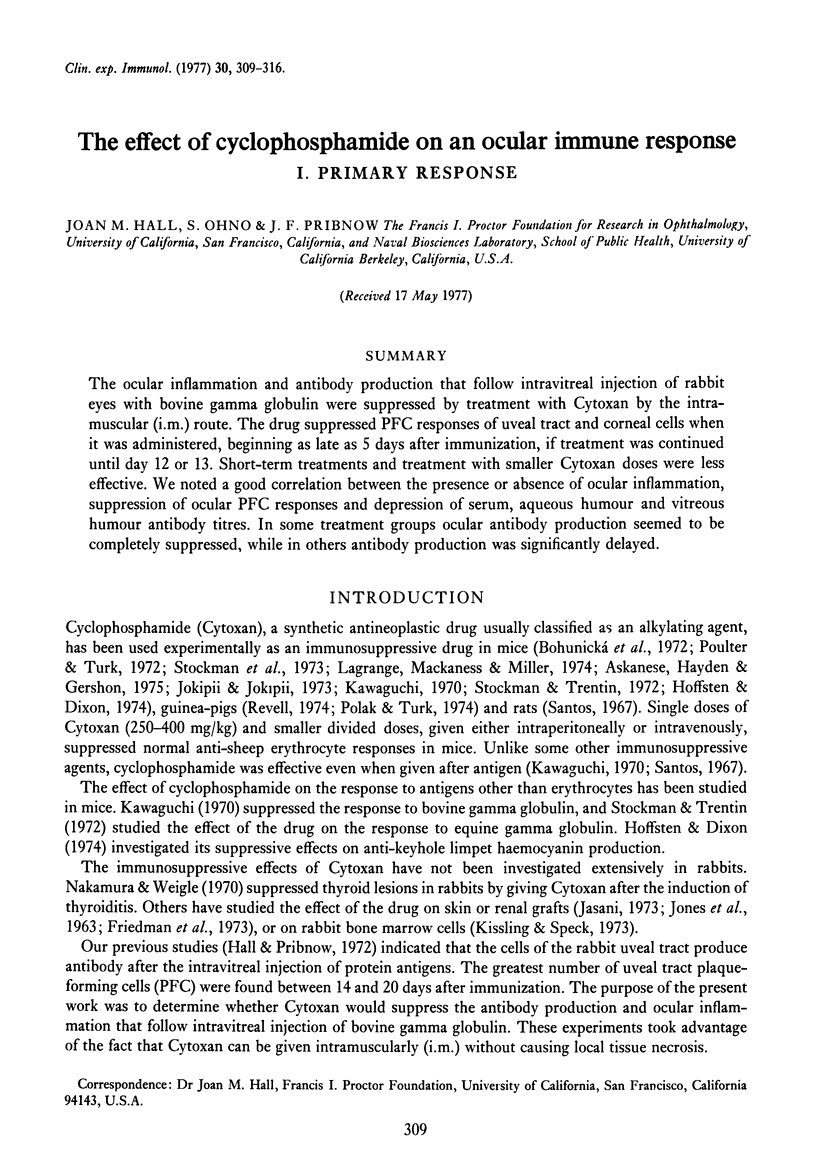
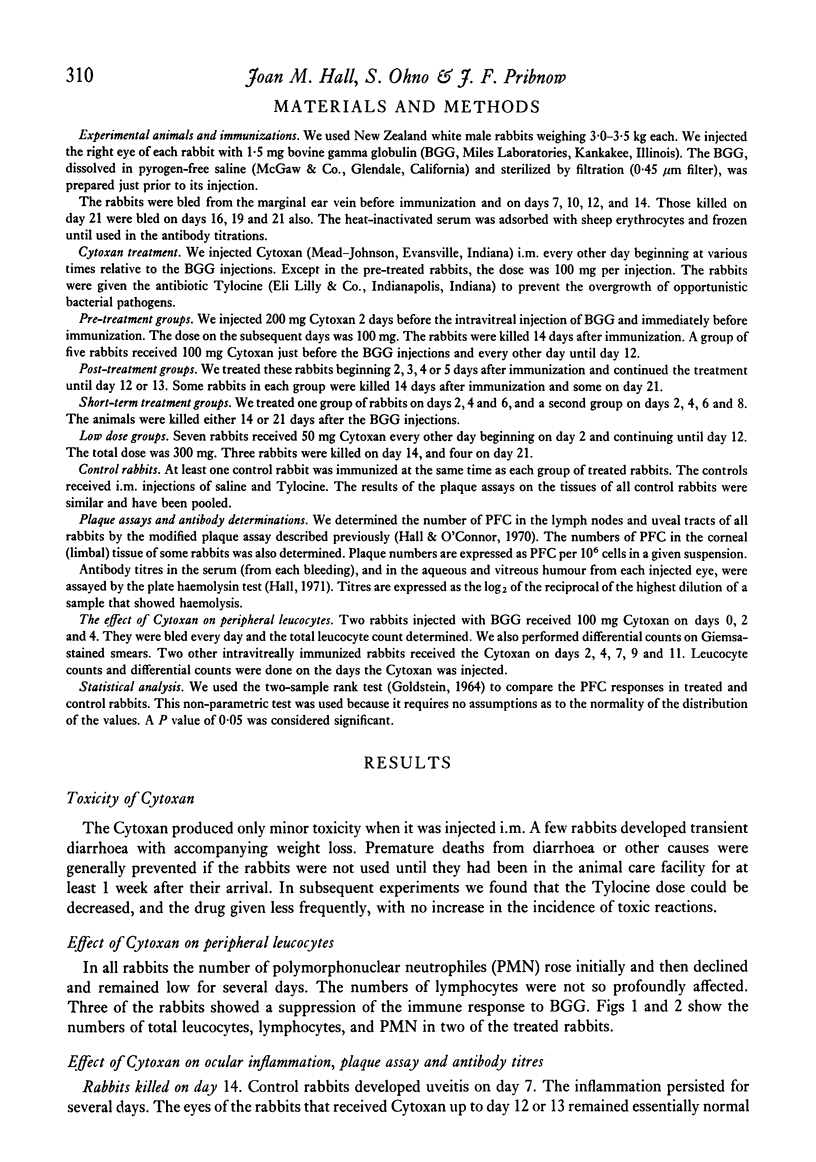

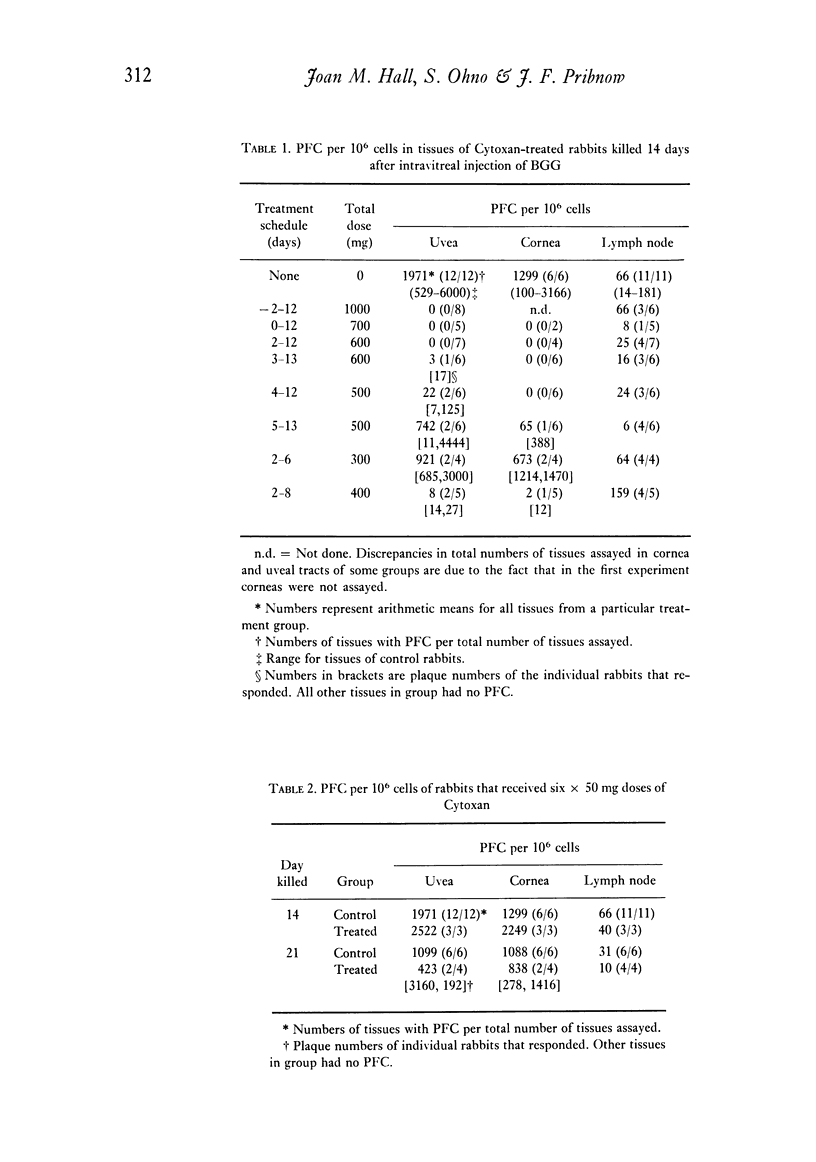
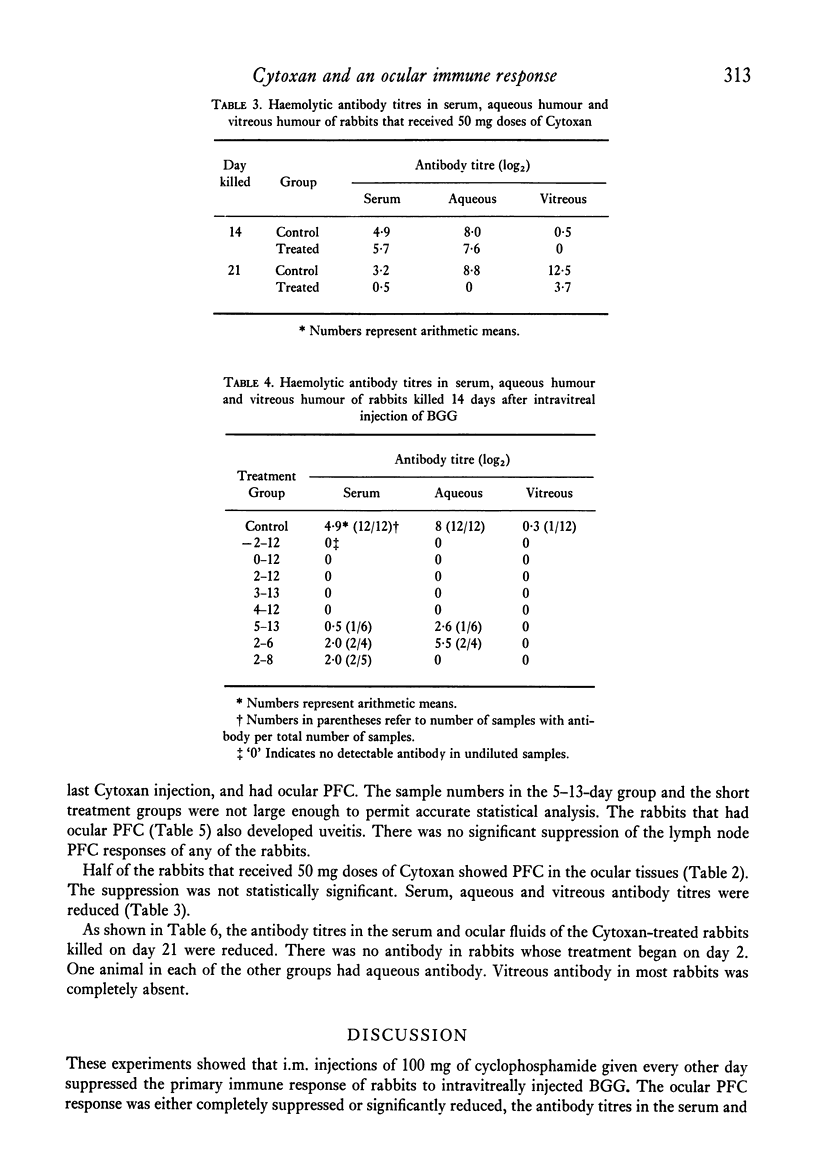
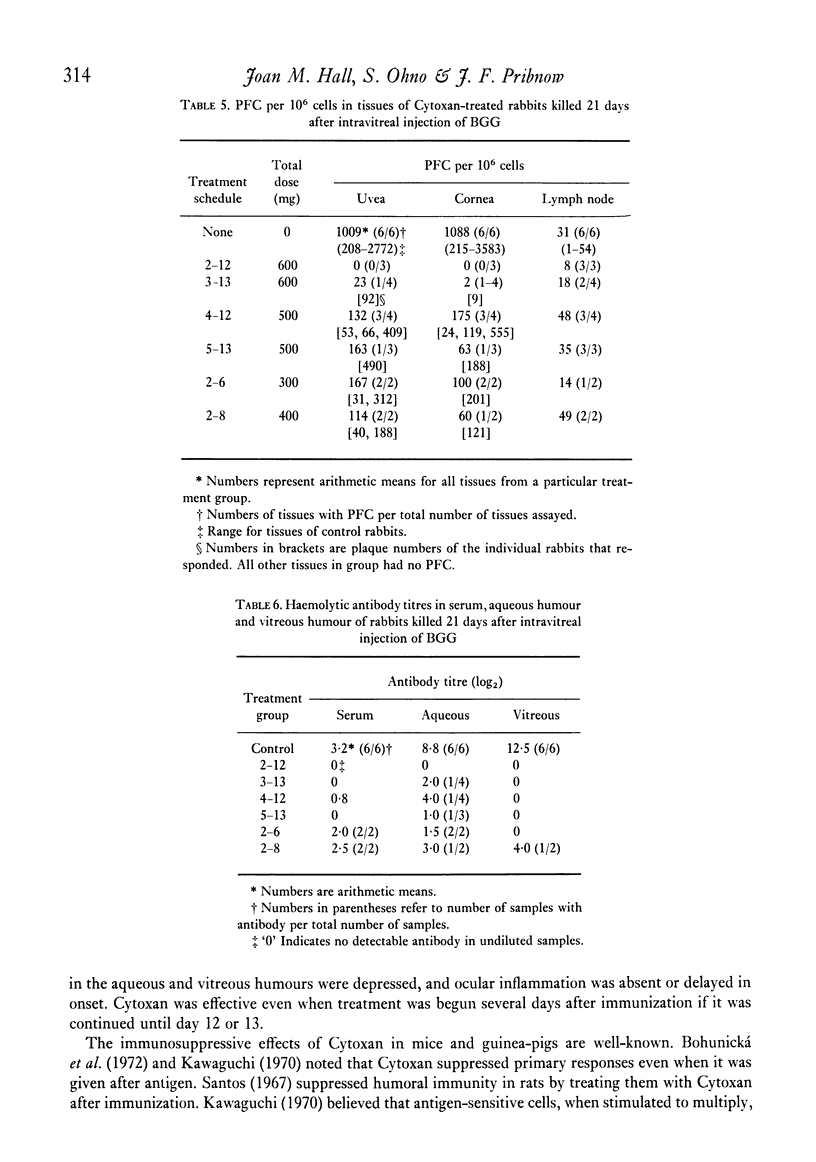
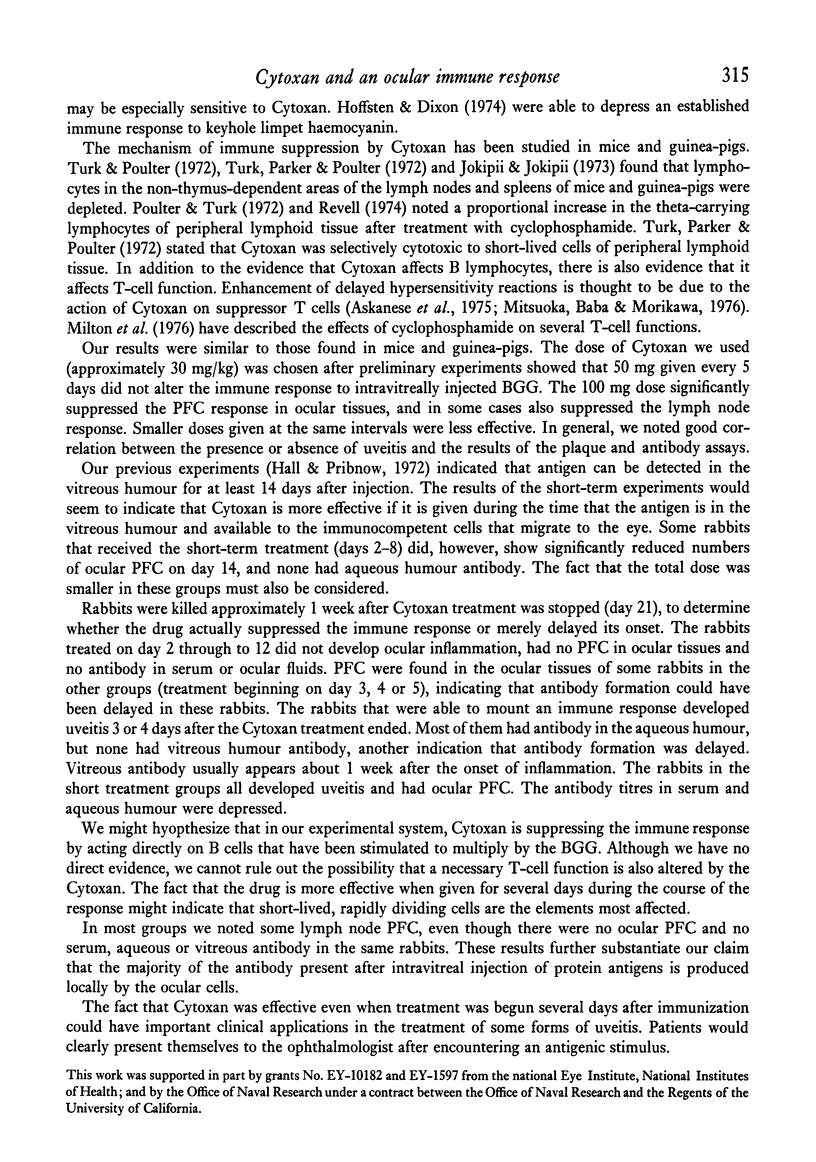
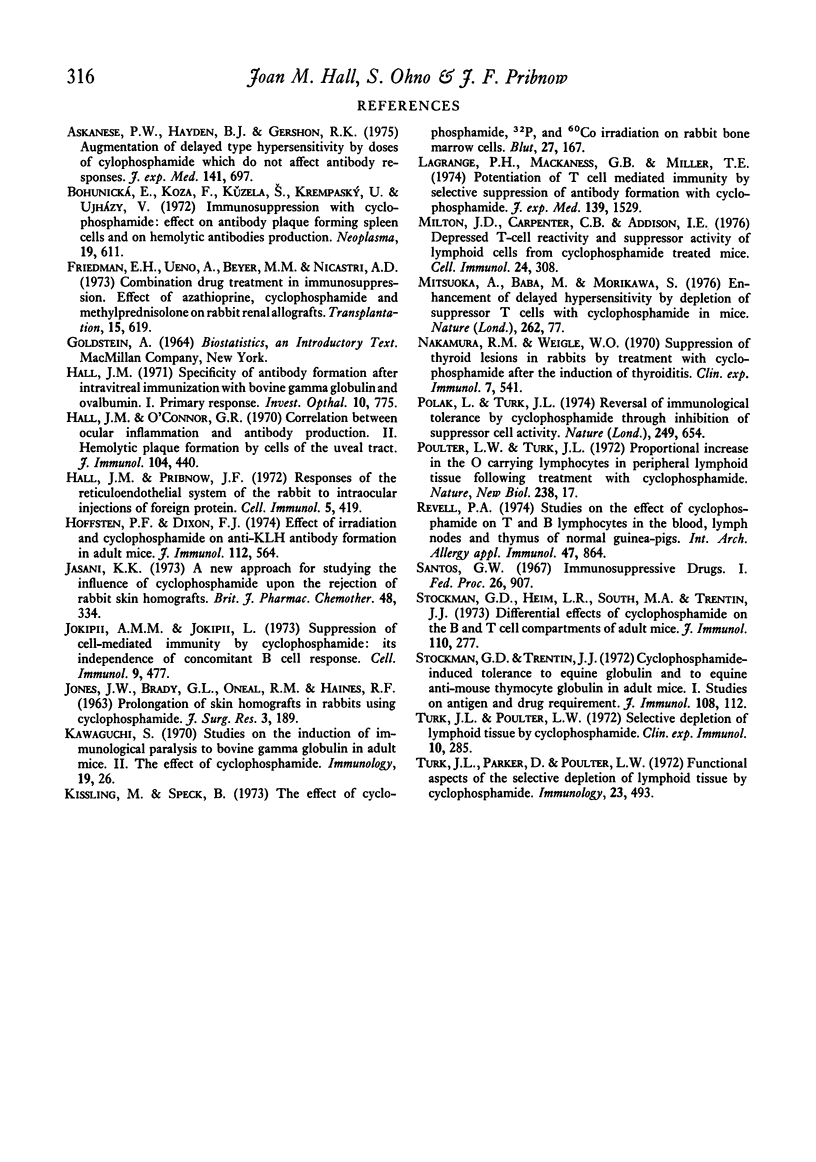
Selected References
These references are in PubMed. This may not be the complete list of references from this article.
- Askenase P. W., Hayden B. J., Gershon R. K. Augmentation of delayed-type hypersensitivity by doses of cyclophosphamide which do not affect antibody responses. J Exp Med. 1975 Mar 1;141(3):697–702. doi: 10.1084/jem.141.3.697. [DOI] [PMC free article] [PubMed] [Google Scholar]
- Bohunická E., Koza I., Kuzela S., Krempaský V., Ujházy V. Immunosuppression with cyclophosphamide: effect on antibody plaque-forming spleen cells and on hemolytic antibodies production. Neoplasma. 1972;19(6):611–620. [PubMed] [Google Scholar]
- Friedman E. A., Ueno A., Beyr M. M., Nicastri A. D. Combination drug treatment in immunosuppression. Effect of azathioprine, cyclophosphamide, and methylprednisolone on rabbit renal allografts. Transplantation. 1973 Jun;15(6):619–623. doi: 10.1097/00007890-197306000-00016. [DOI] [PubMed] [Google Scholar]
- Hall J. M., O'Connor G. R. Correlation between ocular inflammation and antibody production. II. Hemolytic plaque formation by cells of the uveal tract. J Immunol. 1970 Feb;104(2):440–447. [PubMed] [Google Scholar]
- Hall J. M., Pribnow J. F. Responses of the reticuloendothelial system of the rabbit to intraocular injections of foreign protein. Cell Immunol. 1972 Nov;5(3):419–425. doi: 10.1016/0008-8749(72)90068-8. [DOI] [PubMed] [Google Scholar]
- Hall J. M. Specificity of antibody formation after intravitreal immunization with bovine gamma globulin and ovalbumin. I. Primary response. Invest Ophthalmol. 1971 Oct;10(10):775–783. [PubMed] [Google Scholar]
- Hoffsten P. E., Dixon F. J. Effect of irradiation and cyclophosphamide on anti-KLH antibody formation in mice. J Immunol. 1974 Feb;112(2):564–572. [PubMed] [Google Scholar]
- Jokipii A. M., Jokipii L. Suppression of cell-mediated immunity by cyclophosphamide: its independence of concomitant B cell response. Cell Immunol. 1973 Dec;9(3):477–481. doi: 10.1016/0008-8749(73)90063-4. [DOI] [PubMed] [Google Scholar]
- Kissling M., Speck B. The effect of cyclophosphamide, 32P and 60Co irradiation on rabbit bone marrow cells. Blut. 1973 Sep;27(3):167–171. doi: 10.1007/BF01634031. [DOI] [PubMed] [Google Scholar]
- Lagrange P. H., Mackaness G. B., Miller T. E. Potentiation of T-cell-mediated immunity by selective suppression of antibody formation with cyclophosphamide. J Exp Med. 1974 Jun 1;139(6):1529–1539. doi: 10.1084/jem.139.6.1529. [DOI] [PMC free article] [PubMed] [Google Scholar]
- Milton J. D., Carpenter C. B., Addison I. E. Depressed T-cell reactivity and suppressor activity of lymoid cells from cyclophosphamide-treated mice. Cell Immunol. 1976 Jun 15;24(2):308–317. doi: 10.1016/0008-8749(76)90214-8. [DOI] [PubMed] [Google Scholar]
- Mitsuoka A., Baba M., Morikawa S. Enhancement of delayed hypersensitivity by depletion of suppressor T cells with cyclophosphamide in mice. Nature. 1976 Jul 1;262(5563):77–78. doi: 10.1038/262077a0. [DOI] [PubMed] [Google Scholar]
- Nakamura R. M., Weigle W. O. Suppression of thyroid lesions in rabbits by treatment with cyclophosphamide after the induction of thyroiditis. Clin Exp Immunol. 1970 Oct;7(4):541–550. [PMC free article] [PubMed] [Google Scholar]
- Polak L., Turk J. L. Reversal of immunological tolerance by cyclophosphamide through inhibition of suppressor cell activity. Nature. 1974 Jun 14;249(458):654–656. doi: 10.1038/249654a0. [DOI] [PubMed] [Google Scholar]
- Revell P. A. Studies on the effect of cyclophosphamide on T and B lymphocytes in the blood, lymph nodes, and thymus of normal guinea pigs. Int Arch Allergy Appl Immunol. 1974;47(6):864–874. doi: 10.1159/000231277. [DOI] [PubMed] [Google Scholar]
- Santos G. W. Symposium on immunosuppressive drugs. Immunosuppressive drugs. I. Fed Proc. 1967 May-Jun;26(3):907–913. [PubMed] [Google Scholar]
- Stockman G. D., Heim L. R., South M. A., Trentin J. J. Differential effects of cyclophosphamide on the B and T cell compartments of adult mice. J Immunol. 1973 Jan;110(1):277–282. [PubMed] [Google Scholar]
- Stockman G. D., Trentin J. J. Cyclophosphamide-induced tolerance to equine globulin and to equine-anti-mouse-thymocyte globulin in adult mice. I. Studies on antigen and drug requirements. J Immunol. 1972 Jan;108(1):112–118. [PubMed] [Google Scholar]
- Turk J. L., Parker D., Poulter L. W. Functional aspects of the selective depletion of lymphoid tissue by cyclophosphamide. Immunology. 1972 Oct;23(4):493–501. [PMC free article] [PubMed] [Google Scholar]
- Turk J. L., Poulter L. W. Selective depletion of lymphoid tissue by cyclophosphamide. Clin Exp Immunol. 1972 Feb;10(2):285–296. [PMC free article] [PubMed] [Google Scholar]


